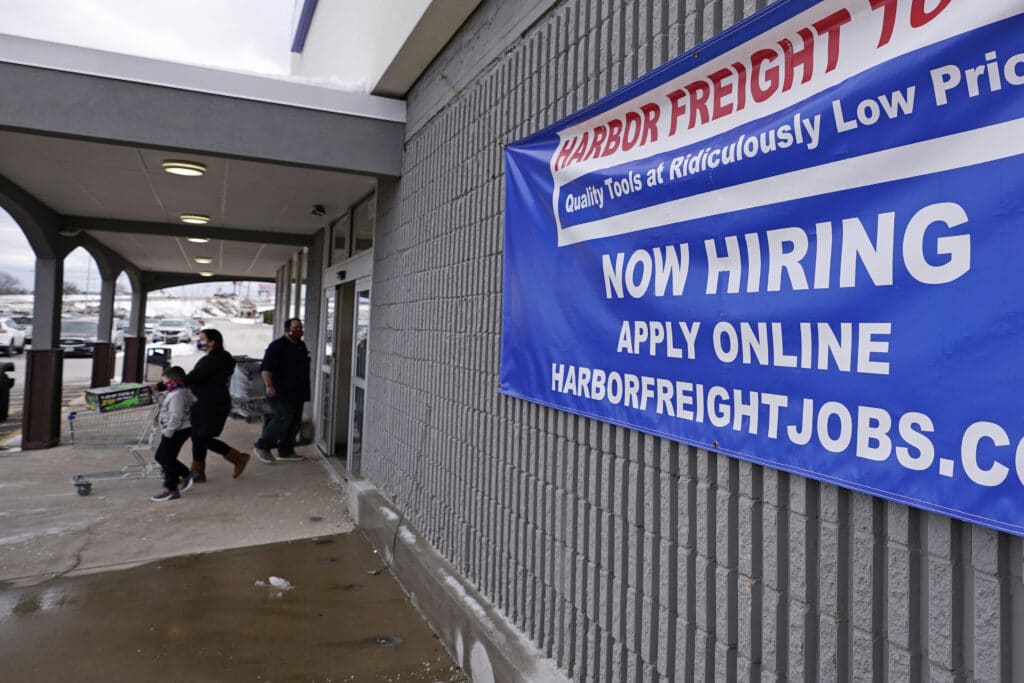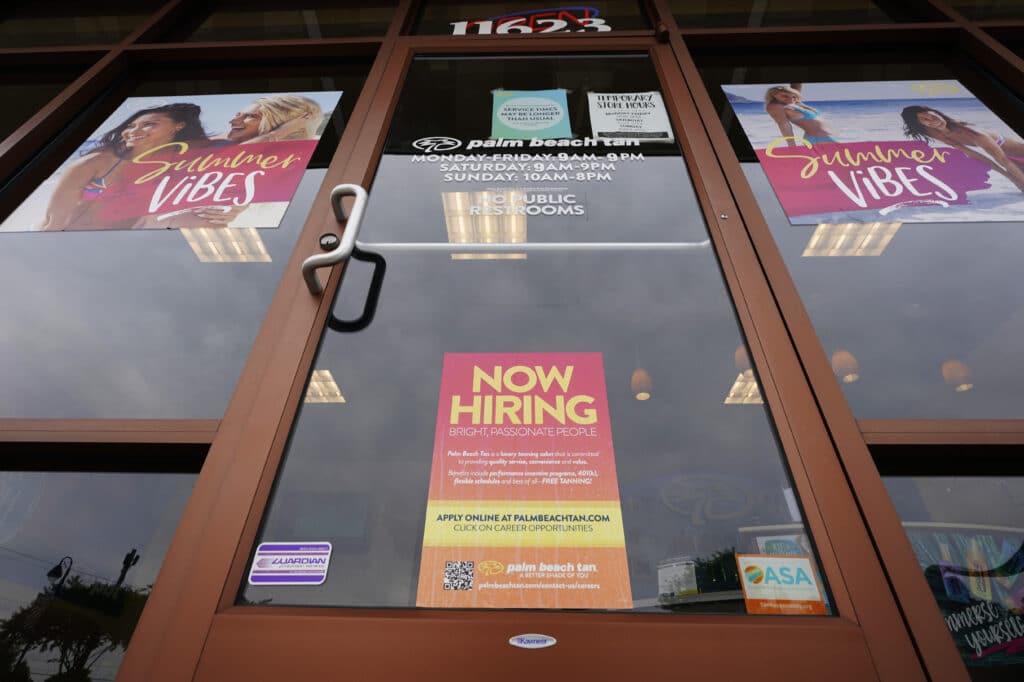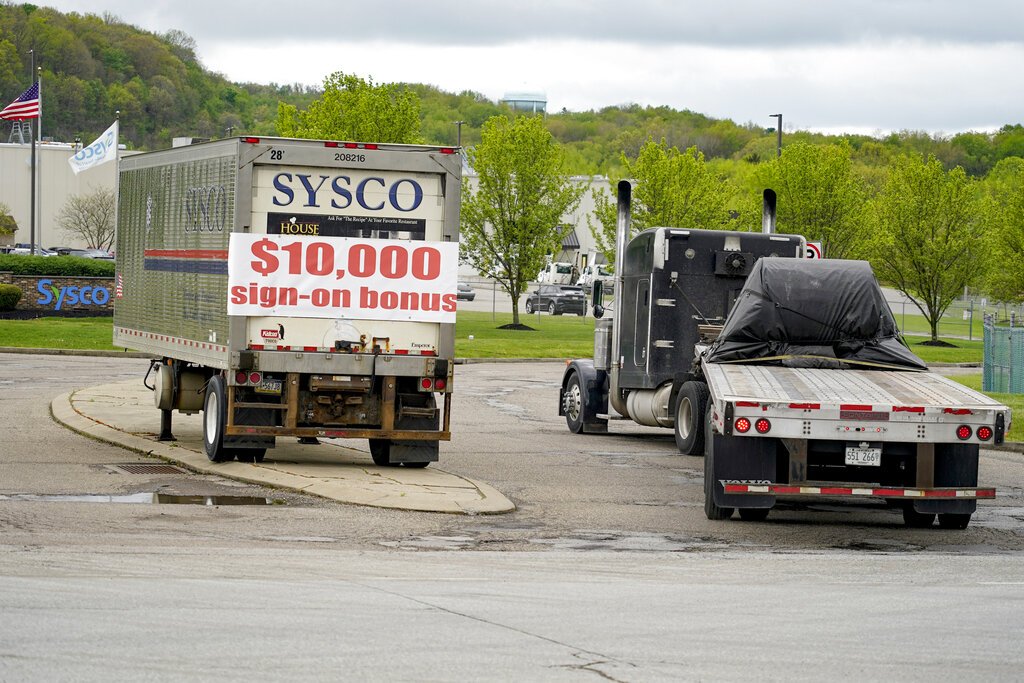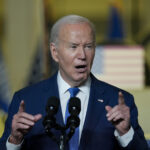Evidence shows the pandemic still has a grip on the economy with many companies struggling to fill jobs, as many states pay citizens more money to stay home than they can earn working. The economy will not recover, until the mask mandates are lifted for fully vaccinated people, and employers can fully reopen. The Associated Press has the story:
The economy is showing some signs of emerging from the drag of the delta variant with confirmed new COVID-19 infections declining
WASHINGTON (AP) — U.S. employers added just 194,000 jobs in September, a second straight tepid gain and evidence that the pandemic still has a grip on the economy with many companies struggling to fill millions of open jobs.

Friday’s report from the Labor Department also showed that the unemployment rate fell sharply to 4.8% from 5.2% in August. Last month’s job gains fell shy of even the modest 336,000 that the economy had added in August and were the fewest since December, when employers actually cut jobs.
The economy is showing some signs of emerging from the drag of the delta variant of the coronavirus, with confirmed new COVID-19 infections declining, restaurant traffic picking up slightly and consumers willing to spend. But new infections remained high as September began. And employers are still struggling to find workers because many people who lost jobs in the pandemic have yet to start looking again. Supply chain bottlenecks have also worsened, slowing factories, restraining homebuilders, and emptying some store shelves.
The proportion of Americans who either have a job or are looking for one — known as labor participation — declined in September from 61.7% to 61.6%, well below the pre-pandemic level of 63.3%, Friday’s report said. Many economists had hoped that the reopening of schools, the expiration of federal unemployment benefits and a quickening pace of vaccinations would have led more to search for jobs. That didn’t happen last month.

Last month’s drop in labor participation was reflective entirely of women, suggesting that many working mothers are still caring for children at home. For men, labor participation was unchanged. Even though schools reopened in September, some after-school programs weren’t yet in place to provide all-day care. And childcare has become scarcer and costlier in many cases. In addition, COVID-19 outbreaks have forced some temporary school shutdowns that make it hard for working mothers to hold down jobs.
Lael Brainard, a member of the Fed’s Board of Governors, noted in a recent speech that COVID-19 outbreaks in late September caused 2,000 schools to close for an average of six days in 39 states.
Many economists still think that most of the roughly 3 million people who lost jobs and stopped looking for work since the pandemic struck will resume their searches as COVID wanes. It took years after the 2008-2009 recession, they note, for the proportion of people working or seeking work to return to pre-recession levels. The government doesn’t count people as unemployed unless they’re actively looking for jobs.
Another factor behind the weakness in hiring was a sharp drop in local government education jobs. The number of such jobs fell by 144,000 last month despite the reopening of schools. That decline suggests that many local school systems didn’t hire as many people as they typically do. Many have had trouble finding enough bus drivers, cafeteria workers and other support staff.

In most industries outside education, job growth in September fared as well as or better than in August. Transportation and warehousing, for example, which has been boosted by a spike in online shopping, added 47,000 jobs. Manufacturers added 26,000. Restaurants, hotels and amusement parks, though, gained just 74,000 positions, more than in August but far below the pace in the summer, when they were adding hundreds of thousands of workers a month.
Several enhanced unemployment benefits ended in early September, including a $300-a-week federal supplement as well as programs that, for the first time, covered gig workers and people who were jobless for six months or more. So far, the ending of those programs appears to have had only a small effect on the number of people seeking work.
Another reason workers are scarce is a surge in retirements among older, more affluent workers whose home equity and stock portfolios have surged since the pandemic struck and who have managed to build up savings. Goldman Sachs estimates that about 1.5 million people have retired who wouldn’t have before the pandemic upended the economy. Many of these people will likely stay retired, economists expect.
In the meantime, fear of COVID-19 continues to keep some would-be job seekers on the sidelines, notably those who previously worked in public-facing service jobs at restaurants, bars, hotels, and retailers.
By CHRISTOPHER RUGABER






